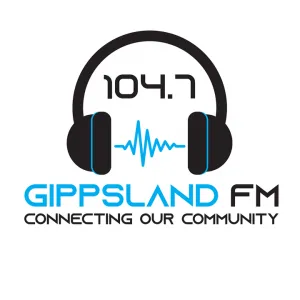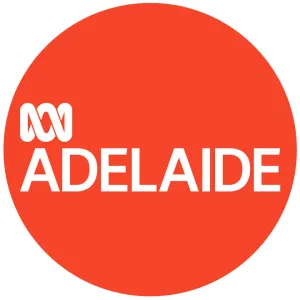Radio ABC 891 Adelaide
0
Share
0
0
[
Listen Live
]Since its inception in the early 1930s, the ABC has become a leading source of news for South Australians. Nevertheless it has not always been the prominent station it is today. Humble beginnings On 14 January 1925, a privately-owned radio station called 5CL commenced on the airwaves of Adelaide. In the early 1930s 5CL was acquired by the Australian Broadcasting Commission, now known as the Australian Broadcasting Corporation. 5CL initially broadcast out of two buildings in Hindmarsh Square. The buildings were once used as horse stables, and di... See more
Collinswood AM|891
1300222891
[email protected]
GPO Box 994 Adelaide 5001
http://www.abc.net.au/adelaide
Views:
1Recommended radio stations:
Since its inception in the early 1930s, the ABC has become a leading source of news for South Australians.
Nevertheless it has not always been the prominent station it is today.
Humble beginnings
On 14 January 1925, a privately-owned radio station called 5CL commenced on the airwaves of Adelaide. In the early 1930s 5CL was acquired by the Australian Broadcasting Commission, now known as the Australian Broadcasting Corporation.
5CL initially broadcast out of two buildings in Hindmarsh Square. The buildings were once used as horse stables, and did not provide the ideal location for a radio station.
Staff often referred to this small space as a 'rabbit warren' of offices.
(See a video of what it was like in the 1930s at 5CL on this page).
Under the new management the station became 5AN, which it was known as for 75 years.
The Hindmarsh studio had many technical issues. It was not sound-proofed, and someone who spoke too loudly in the nearby foyer could be picked up by the studio microphone.
Over the next 30 years, radio was the only source of broadcasting by the ABC.
The introduction of television
On the first day of the Adelaide festival 11 March 1960, the people of Adelaide witnessed television for the very first time. Luckily the ABC had already started preparing for the introduction of television months beforehand.
In 1959, The ABC brought an old mansion in Collinswood known as Tregenna on a four and a half acre block. Tregenna was set up as offices for television staff.
The prosperous 1970s
In the early 1970s the Tregenna mansion was demolished, making way for the eight-story building.
The rest of the ABC staff relocated to the new building site in Collinswood in 1974.
(See a video of the last day at Hindmarsh Square on this page)
Local radio in the 70s was made up of small and multi-skilled teams. If one member was not available for the broadcast that day, the show was compromised and in some cases even cancelled.
These teams consisted of a presenter also known as the announcer, a radio operator, and a technical operator.
The radio operator's responsibilities were to control the microphone levels and play the music off record players. However with no sound levels monitors available, the task of controlling the announcer's voice was very difficult.
Telephones could not be used for interviews in the 70s, so guests would have to come into the studio.
There were also some very simple recording machines for recording interviews prior to the show.
Errol Silver became Regional Manager of 5AN in the late 70s and revolutionised the way outside broadcasting was carried out.
Silver acquired a 'big bus' to take Local Radio on the road and to the listeners. Unfortunately the bus was not particularly reliable and as well as spilling out excessive diesel fumes, it often broke down.
An old studio desk was put in the back of the bus, and became the first makeshift outside broadcast studio equipment.
During this time there was a recruiting spree of younger employees who brought fresh ideas to the station. However the older staff often objected to the new ideas and directions of the ABC.
It was the beginning of a new era and the Whitlam government was starting to allocate more funding to the ABC and the new ideas were being utilised.
ABC began broadcasting on the FM band in the late 70s, this station is still around today as 'ABC Classic FM'.
The turbulent 1980s
At the start of the 1980s the ABC faced major budget cuts.
Any plans of advances to the station were brought to a halt and redundancies became a common occurrence. ABC Adelaide was cut back to almost half of its staff. This was a turning point in the station's history.
Ideas were being discussed for increasing funding, including hiring out the ABCs facilities to commercial enterprises. None of these proposals came to fruition.
During this time David Hill was taken on as Local Radio manager. He had many ideas on how to get the station out of its current financial troubles and back onto the right track.
Hill set up a database to find out where the funds were being allocated so some areas could be cut back and others given extra funds.
Financial stresses faded in the mid 80s and the ABC Adelaide was finally able to see the end of a dark period in its history.
(See the two videos of what 5AN 891 was like in the 1980s on this page).
The Australian Broadcasting Corporation was first to use satellite transmissions to broadcast, after a few years this became commonplace for most FM stations.
1990s to the new century
With the invention of the Mini Disc recorder the ABC was able to massively reduce editing times.
Also in the 90s, ABC Online was born, providing a new platform for the ABC to expand.
The introduction of the internet was initially slow, but ABC Online is now a powerhouse in its own right, as well as being a vital link for television and radio. It has the ability to stream audio, vodcast, podcast across the world wide web.
And surveys showing a growing public awareness of ABC local radio prompted a change of name.
Out went the 5AN masthead to be replaced with the more all-encompassing 891 ABC Adelaide in 2000.
Outside broadcasts
Outside broadcasts have been around since the inception of the ABC in Adelaide, and were initially used for broadcasting at the horse races.
Nowadays the South Australian Grandstand team broadcasts from a large number of popular local sporting events.
All of ABC Local Radio's programs regularly broadcast from a wide variety of locations throughout South Australia. Including Oodla Wirra, Roxby Downs, Glendambo, Coober Pedy, Oodnadatta, and the Pitlands.
Since ABC Adelaide's conception a number of locally produced programs have been developed.
Other ABC shows
Classic FM
ABC FM began in 1976 and was broadcasting on the brand new FM band before most commercial stations. It concentrated on fine music and arts programs, in 1994 it was completely revamped and renamed Classic FM.
Rural Radio
ABC Radio's Country Hour is recognised as Australia's longest running radio program. With content provided by the rural reporters in the five regional stations across South Australia.
BtN (Television)
Adelaide's own Behind the News has been nationally broadcasting for over 30 years. Its content, with a mix of entertainment, information and news, is aimed at school children.
Nevertheless it has not always been the prominent station it is today.
Humble beginnings
On 14 January 1925, a privately-owned radio station called 5CL commenced on the airwaves of Adelaide. In the early 1930s 5CL was acquired by the Australian Broadcasting Commission, now known as the Australian Broadcasting Corporation.
5CL initially broadcast out of two buildings in Hindmarsh Square. The buildings were once used as horse stables, and did not provide the ideal location for a radio station.
Staff often referred to this small space as a 'rabbit warren' of offices.
(See a video of what it was like in the 1930s at 5CL on this page).
Under the new management the station became 5AN, which it was known as for 75 years.
The Hindmarsh studio had many technical issues. It was not sound-proofed, and someone who spoke too loudly in the nearby foyer could be picked up by the studio microphone.
Over the next 30 years, radio was the only source of broadcasting by the ABC.
The introduction of television
On the first day of the Adelaide festival 11 March 1960, the people of Adelaide witnessed television for the very first time. Luckily the ABC had already started preparing for the introduction of television months beforehand.
In 1959, The ABC brought an old mansion in Collinswood known as Tregenna on a four and a half acre block. Tregenna was set up as offices for television staff.
The prosperous 1970s
In the early 1970s the Tregenna mansion was demolished, making way for the eight-story building.
The rest of the ABC staff relocated to the new building site in Collinswood in 1974.
(See a video of the last day at Hindmarsh Square on this page)
Local radio in the 70s was made up of small and multi-skilled teams. If one member was not available for the broadcast that day, the show was compromised and in some cases even cancelled.
These teams consisted of a presenter also known as the announcer, a radio operator, and a technical operator.
The radio operator's responsibilities were to control the microphone levels and play the music off record players. However with no sound levels monitors available, the task of controlling the announcer's voice was very difficult.
Telephones could not be used for interviews in the 70s, so guests would have to come into the studio.
There were also some very simple recording machines for recording interviews prior to the show.
Errol Silver became Regional Manager of 5AN in the late 70s and revolutionised the way outside broadcasting was carried out.
Silver acquired a 'big bus' to take Local Radio on the road and to the listeners. Unfortunately the bus was not particularly reliable and as well as spilling out excessive diesel fumes, it often broke down.
An old studio desk was put in the back of the bus, and became the first makeshift outside broadcast studio equipment.
During this time there was a recruiting spree of younger employees who brought fresh ideas to the station. However the older staff often objected to the new ideas and directions of the ABC.
It was the beginning of a new era and the Whitlam government was starting to allocate more funding to the ABC and the new ideas were being utilised.
ABC began broadcasting on the FM band in the late 70s, this station is still around today as 'ABC Classic FM'.
The turbulent 1980s
At the start of the 1980s the ABC faced major budget cuts.
Any plans of advances to the station were brought to a halt and redundancies became a common occurrence. ABC Adelaide was cut back to almost half of its staff. This was a turning point in the station's history.
Ideas were being discussed for increasing funding, including hiring out the ABCs facilities to commercial enterprises. None of these proposals came to fruition.
During this time David Hill was taken on as Local Radio manager. He had many ideas on how to get the station out of its current financial troubles and back onto the right track.
Hill set up a database to find out where the funds were being allocated so some areas could be cut back and others given extra funds.
Financial stresses faded in the mid 80s and the ABC Adelaide was finally able to see the end of a dark period in its history.
(See the two videos of what 5AN 891 was like in the 1980s on this page).
The Australian Broadcasting Corporation was first to use satellite transmissions to broadcast, after a few years this became commonplace for most FM stations.
1990s to the new century
With the invention of the Mini Disc recorder the ABC was able to massively reduce editing times.
Also in the 90s, ABC Online was born, providing a new platform for the ABC to expand.
The introduction of the internet was initially slow, but ABC Online is now a powerhouse in its own right, as well as being a vital link for television and radio. It has the ability to stream audio, vodcast, podcast across the world wide web.
And surveys showing a growing public awareness of ABC local radio prompted a change of name.
Out went the 5AN masthead to be replaced with the more all-encompassing 891 ABC Adelaide in 2000.
Outside broadcasts
Outside broadcasts have been around since the inception of the ABC in Adelaide, and were initially used for broadcasting at the horse races.
Nowadays the South Australian Grandstand team broadcasts from a large number of popular local sporting events.
All of ABC Local Radio's programs regularly broadcast from a wide variety of locations throughout South Australia. Including Oodla Wirra, Roxby Downs, Glendambo, Coober Pedy, Oodnadatta, and the Pitlands.
Since ABC Adelaide's conception a number of locally produced programs have been developed.
Other ABC shows
Classic FM
ABC FM began in 1976 and was broadcasting on the brand new FM band before most commercial stations. It concentrated on fine music and arts programs, in 1994 it was completely revamped and renamed Classic FM.
Rural Radio
ABC Radio's Country Hour is recognised as Australia's longest running radio program. With content provided by the rural reporters in the five regional stations across South Australia.
BtN (Television)
Adelaide's own Behind the News has been nationally broadcasting for over 30 years. Its content, with a mix of entertainment, information and news, is aimed at school children.
© LogFM.com, 2009-2024 (2024-04-04,21:55:05)





